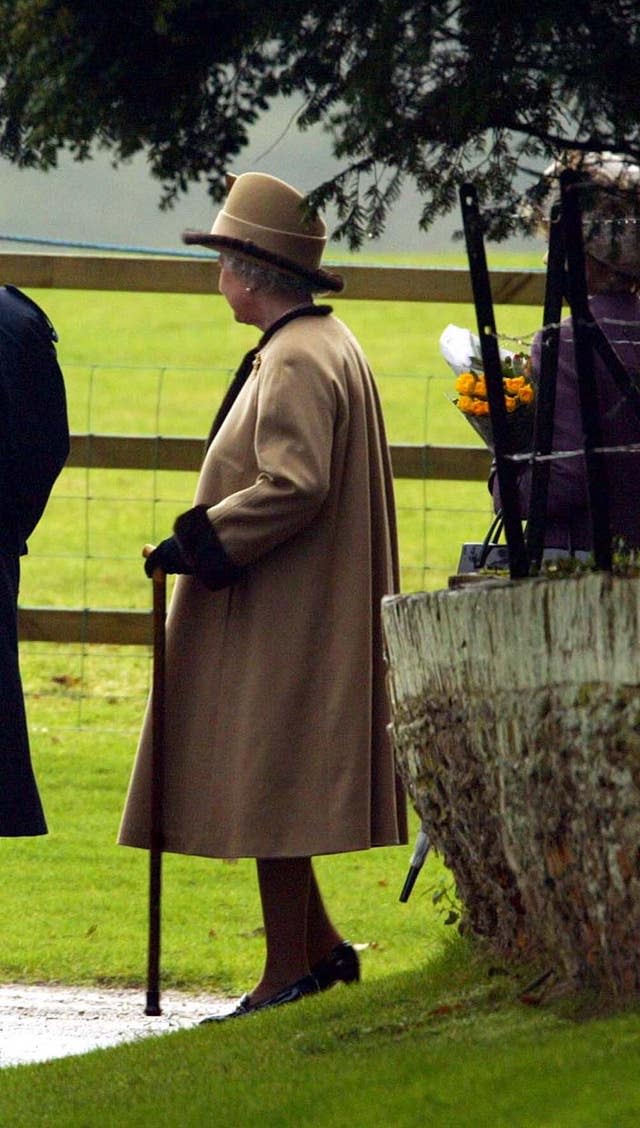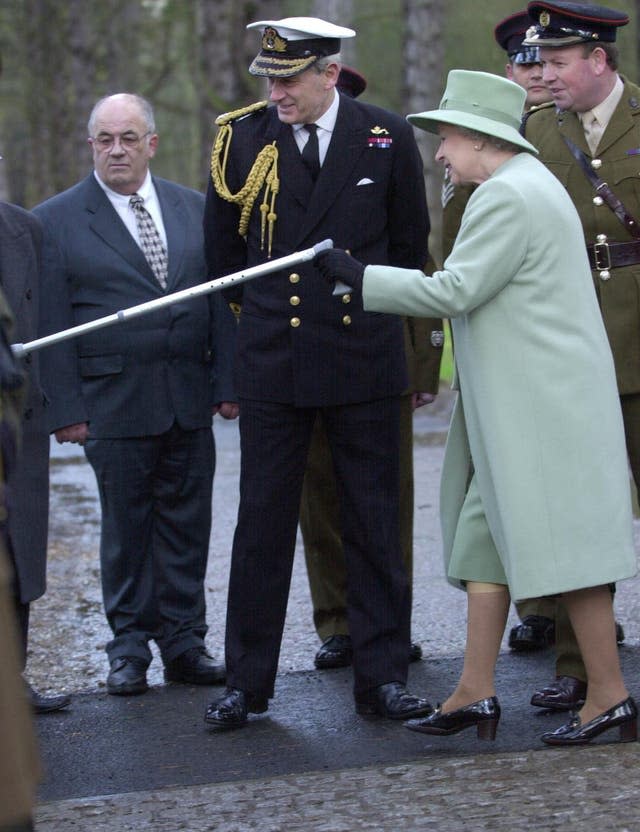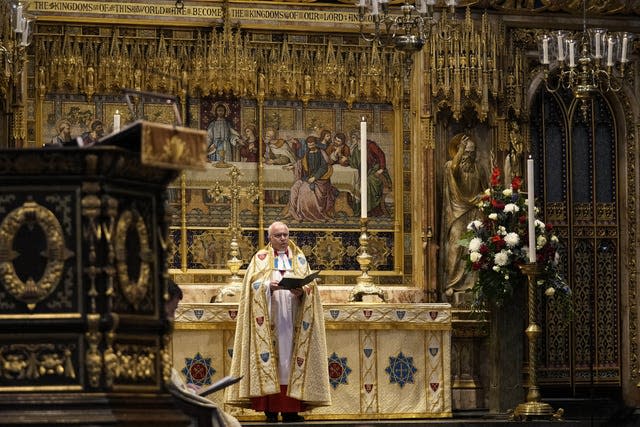Queen uses walking stick at Westminster Abbey service
The Queen has used a walking stick for what is believed to be the first time at a major public event when she attended a service marking the centenary of the Royal British Legion.
The 95-year-old appeared at ease as she moved to and from her seat at Westminster Abbey with the aid of the stick, handed to her by the Princess Royal when she first arrived and stepped from a state limousine.
In another departure the Queen, who is the Royal British Legion’s patron, did not enter the abbey by her traditional route – the Great West Door – but via the Poet’s Yard entrance, a shorter route to her seat.
Both developments are understood to have been tailored for the Queen’s comfort.
Buckingham Palace declined to comment.
The Queen was pictured using a stick a number of times during 2003 and 2004, but this was after surgery to remove torn cartilage from her right knee.
She left the King Edward VII’s Hospital in January 2003 using a heavy duty stick after the operation, and also used a wooden aid at a Sandringham church service later that month.

A few days later, she used another adjustable stick when she unveiled a set of bronze gates on the Sandringham estate, using it as a means of gesturing during the event.
The stick used by the Queen on Tuesday appears similar to one she leant on during an event in 2004 and has a distinctive handle and leather strap.
Adjustments have been made to major events before to help the Queen.
In 2016, she used a lift rather than stairs to enter Parliament for the State Opening which avoided the 26 steps of the Royal Staircase at the Sovereign’s Entrance.

She has also not worn the heavy Imperial State Crown since 2016, and it is now placed on a deep red and gold velvet cushion during the proceedings.
In his address, the Dean of Westminster, the Very Rev David Hoyle, celebrated the Royal British Legion’s ability to stitch “together our shattered experience” and make us “whole”, and said it has become the bridge between ordinary men and women and those “who have been set apart by serving in the forces”.
He also questioned whether the tendency of crowds to cheer departing troops but be absent when the wounded returned meant “if we will really learn lessons from this pandemic” or give in to the voices “that want to turn the page”.
Retired Lieutenant General James Bashall, the Royal British Legion’s national president, took part in a re-dedication, reaffirming the charity’s commitment to its work, and the Princess Royal gave a reading from the Bible.

The charity was founded on May 15 1921 and brought together four national organisations established to care for military personnel and their families after the First World War.
The physical injuries of the returning servicemen were not the only issues that needed addressing.
Some men found it difficult to find work, which left their dependants in need.
The Royal British Legion is also famous for its annual poppy appeal, which encourages public donations in return for the red flower worn in memory of the UK’s war dead.
The dean told the congregation: “The legion stands between us and the men and women who have been set apart by serving in the forces. The legion knows the reality of what that is.
“The legion remembers truths that some would urge us to forget. The legion speaks into our silence. The legion stitches back together our shattered experience and makes us whole.”

